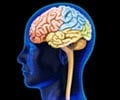Give a thought to all the things you are doing at this moment. As your eyes go through the lines of this article, your brain could be processing the smell of coffee.

Much previous neuroscience research has measured how neurons respond to a single, specialized activity. This research has uncovered distinct neuronal classes in specific brain areas. "The visual cortex is an excellent example," explains Churchland. "We know that those neurons are highly specialized. For example, specific neurons are specialized to respond to stimuli located in particular parts of space, way up high, or way off to the left, for instance."
Churchland wondered if the same rules apply in other parts of the brain where complex processing tasks are taking place. Her team studied the posterior parietal cortex (PPC). This area of higher brain function has been has been associated with numerous behaviors, such as decision-making, value judgments, attention, and planning. Are there specialized groups of neurons in the PPC for each function? Or do individual neurons respond to multiple stimuli, in unique ways?
To distinguish between the two possibilities, Churchland and her team exploited a research setup that has been used to study decision-making. "We trained rats to associate a rapid pulse of flashing light or sound with a particular door, and slower stimuli with another door." The team then measured how individual neurons in the rat PPC respond to both light and sound, and correlated these with the decisions the animals ultimately made in each trial.
"We were surprised to find that there were no specialized populations among neurons in the PPC that we studied," says Churchland. Instead, the team found that PPC neurons were multitasking, each one responding to more than one stimulus. No distinct classes emerged among the more than 300 neurons they measured. "Each neuron had its own signature for how it responded - no two were alike - which means that we couldn't lump them together into categories."
Churchland proposes that neurons such as these, which are able to multitask, may offer the brain a flexible way to combine responses. "This changes the way our team thinks about how neurons are used and work together," she says. Based on these results, Churchland says, researchers may want to question the often used method of averaging the responses of different neurons to describe their collective behavior, under the assumption that anatomically distinct groups of neurons will respond to stimuli in the same way. More broadly, the research suggests a new way of thinking about how neurons behave. In this view, "it is no longer single neurons making sense of a behavior, but the whole group, integrating multiple signals," says Churchland.
Advertisement
Source-Eurekalert











